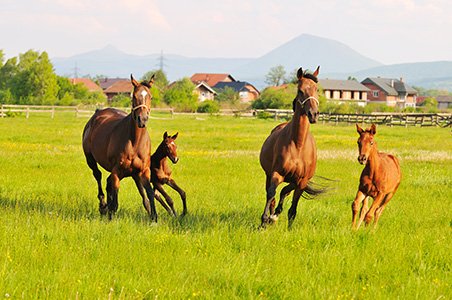- Empty cart.
- Continue Shopping
The Importance of Copper in a Horse’s Diet

Copper is an essential trace mineral that plays a vital role in the health and well-being of horses. It is required for a range of physiological functions, including the formation of red blood cells, the maintenance of healthy connective tissues, and the proper functioning of the immune system. As such, understanding the significance of copper in a horse’s diet, particularly at various stages of growth, is crucial for equine owners and caretakers.
Copper’s Role Across Different Life Stages
- Foals and Youngsters
Foals and young horses are in a crucial growth phase that demands adequate amounts of copper. This mineral supports bone development and growth, enhancing the formation of cartilage and connective tissue. Inadequate copper levels can lead to developmental issues such as osteochondrosis, which can affect a horse’s long-term athletic capabilities and overall health. A typical recommendation is to ensure that foals receive between 100 to 200 mg of copper per day, depending on their weight and nutritional needs. - Adolescents and Adults
As horses reach adolescence, their copper requirements stabilize but remain significant for overall health. Adults still need copper for strong bones, a healthy immune response, and efficient enzyme function. Horses in regular training and those involved in competitive sports may benefit from slightly higher copper content in their diet to support their increased physiological demands. The typical adult horse requires approximately 50 to 100 mg of copper daily. - Senior Horses
Older horses, too, benefit from copper intake. They may be prone to joint problems and other age-related health issues that copper can help mitigate. Incorporating copper can help maintain their mobility and quality of life, as it contributes to the maintenance of cartilage and connective tissue.
Effects of Copper Deficiency
Copper deficiency can manifest in various ways, including poor coat quality, weight loss, developmental orthopedic disease in young horses, and increased susceptibility to infections. Behavioral changes may also occur; for instance, some studies suggest that a lack of copper could lead to irritability or increased nervousness in horses, potentially due to an inadequate response to stressors.
Risks of Excessive Copper Intake
While adequate copper is essential, excessive amounts can have detrimental effects. The recommended levels of copper should not exceed 500 mg daily for adults. Over-supplementation can induce toxicity, leading to symptoms such as diarrhea, lethargy, and in severe cases, liver damage. Additionally, high levels of copper can interfere with the absorption of other crucial minerals like zinc and iron, creating an imbalance that adversely affects health.
Behavioral changes have been noted in horses with copper toxicity, such as hyperactivity or increased aggression, suggesting that copper levels need to be carefully monitored. Regularly testing forage and feed for mineral content can help maintain a balanced diet without risk of excessive copper intake.
Conclusion
In conclusion, copper is a key element in a horse’s diet throughout their life. Its benefits are particularly notable during growth phases—before, during, and after weaning—while also supporting health and performance in adult and senior horses. The balance is critical: maintaining optimal levels of copper can enhance health, while excess can lead to toxicity and associated behavioral issues. For horse owners, understanding these dynamics is important in crafting a diet that supports optimal growth and health, ensuring that their equine companions thrive. Regular consultation with a veterinarian or an equine nutritionist can help tailor diets and supplementation to meet the specific needs of each horse at different life stages.

